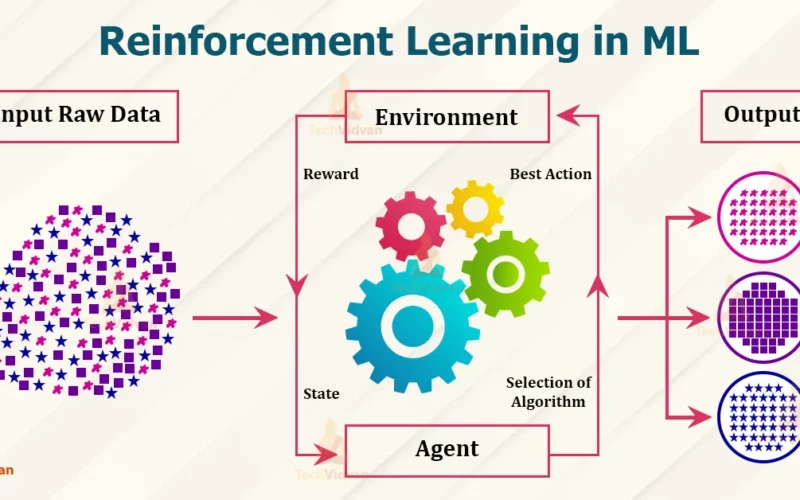Reinforcement learning (RL) is a type of machine learning that allows software agents to learn how to behave in an environment by trial and error. The agent receives feedback (i.e., rewards) for taking actions that lead to desired outcomes and learns to associate those actions with the rewards. This feedback-driven learning process allows the agent to improve its behavior over time, eventually learning to take actions that maximize its rewards.
RL has been shown to be effective in solving a wide variety of problems, including game playing, robotics, and finance. However, like any machine learning technique, RL has its own set of pros and cons.
Pros of Reinforcement Learning
- Can solve complex problems. RL is particularly well-suited for solving complex problems that are difficult or impossible to solve with traditional machine learning techniques. This is because RL allows the agent to learn from its own experience, rather than being explicitly programmed with the solution.
- Can adapt to changing environments. RL agents can learn to adapt their behavior to changes in the environment. This is because the agent’s rewards are based on the outcome of its actions, so it will naturally learn to take actions that lead to rewards in the current environment.
- Can be used to solve a wide range of problems. RL has been used to solve a wide variety of problems, including game playing, robotics, and finance. This is because RL is a general-purpose learning technique that can be applied to any problem where the agent can receive feedback for its actions.
Cons of Reinforcement Learning
- Requires a lot of data. RL agents typically require a lot of data in order to learn effectively. This is because the agent needs to learn from its own experience, and it needs to have enough experience to see the patterns in the data that lead to rewards.
- Can be slow to learn. RL agents can be slow to learn, especially for complex problems. This is because the agent needs to explore the environment and try different actions in order to learn what actions lead to rewards.
- Can be difficult to debug. RL agents can be difficult to debug, because it is not always clear why the agent is behaving in a certain way. This is because the agent’s behavior is a result of its interactions with the environment, and it can be difficult to track down the specific interactions that are causing the agent to behave incorrectly.
Other Considerations
In addition to the pros and cons listed above, there are a few other considerations that should be taken into account when using RL. These include:
- The environment. The environment in which the agent is learning is a critical factor in the success of RL. The environment must be well-defined and predictable so that the agent can learn to associate actions with rewards.
- The reward function. The reward function is a function that maps from states and actions to rewards. The reward function is used to tell the agent what actions are good and which are bad. It is important to design the reward function carefully so that the agent learns the desired behavior.
- The exploration-exploitation tradeoff. When learning in an environment, the agent must balance exploration and exploitation. Exploration is the process of trying new things, while exploitation is the process of repeating actions that have been shown to be successful. The agent must strike a balance between exploration and exploitation so that it can learn to take the best actions in the long run.
Conclusion
Reinforcement learning is a powerful machine learning technique that can be used to solve a wide variety of problems. However, like any machine learning technique, RL has its own set of pros and cons. It is important to be aware of these pros and cons before using RL so that you can choose the right technique for your problem.
In addition to the pros and cons listed above, there are a number of other factors that should be considered when using RL. These include the complexity of the problem, the availability of data, and the time constraints. RL is a powerful technique, but it is not always the best choice for every problem. It is important to carefully evaluate the problem before deciding whether or not to use RL.thumb_upthumb_downuploadGoogle itmore_vert











